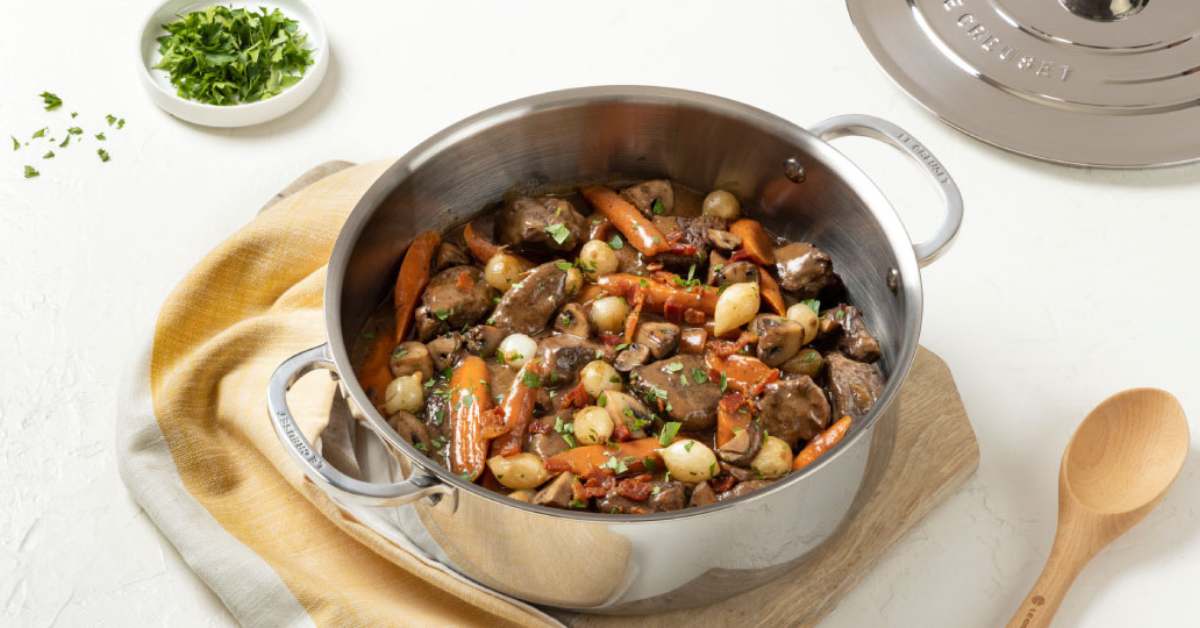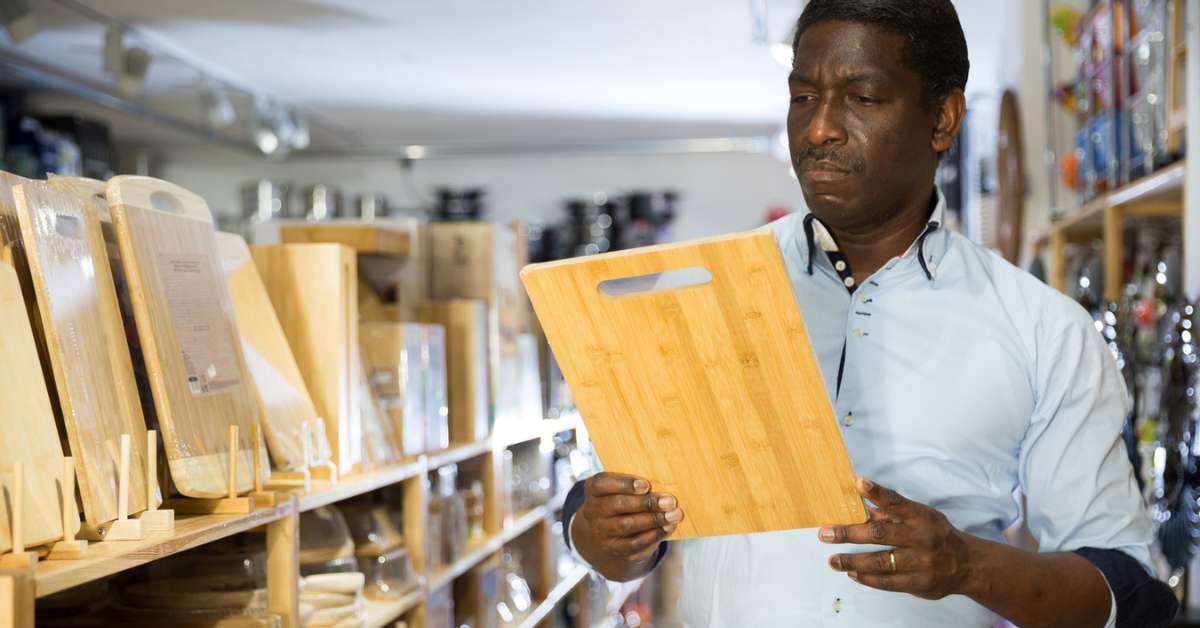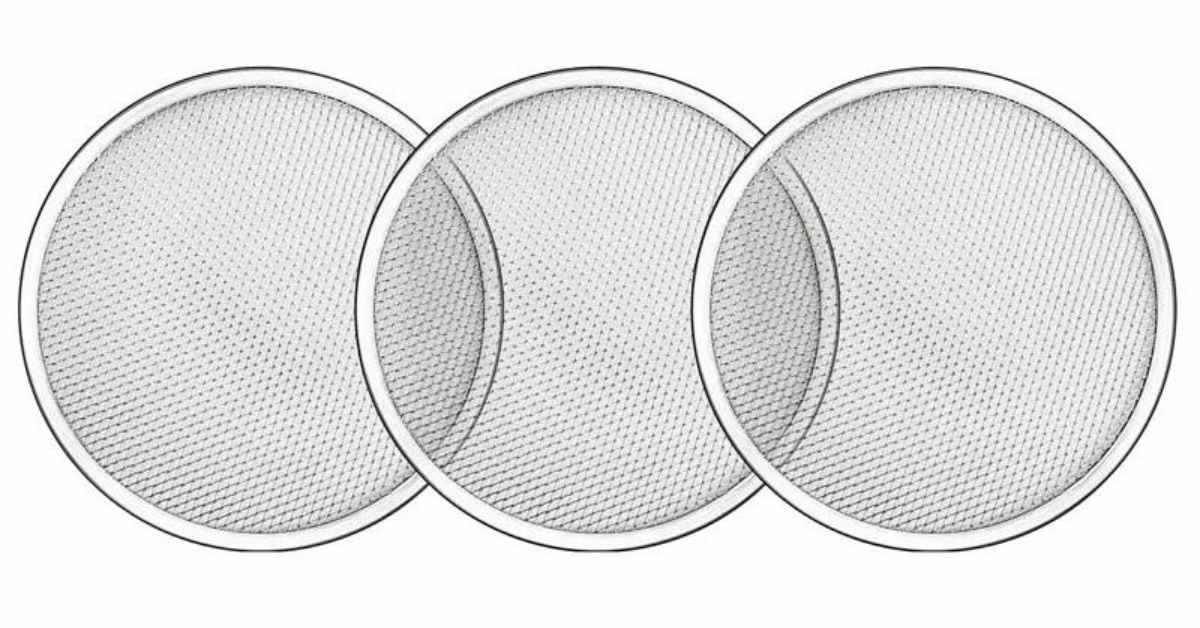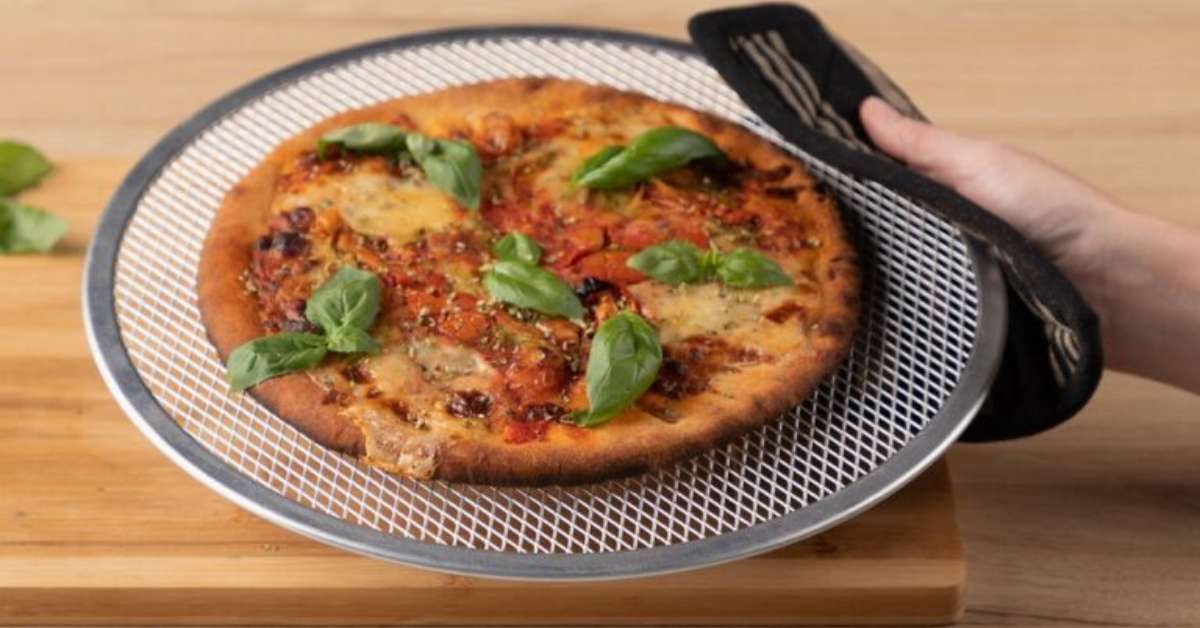Welcome to our blog post on “What is a Rondeau Pan Used for | Exploring 2023.” This article will delve into the fascinating world of culinary tools and shed light on the versatile Rondeau pan.
Whether you’re a professional chef or an enthusiastic home cook, understanding the purpose and potential of this unique pan can elevate your cooking game to new heights. Join us as we unravel the secrets of the Rondeau pan and discover how it can revolutionize your culinary experiences in 2023 and beyond.
Table of Contents
ToggleTypes of Rondeau Pans
When it comes to Rondeau pans, you’ll find a variety of options to suit your specific cooking needs. Let’s explore the different types of Rondeau pans available today.
Stainless Steel Rondeau Pans
These pans are known for their durability and excellent heat conductivity. Stainless steel Rondeau pans are popular among professional chefs because they distribute heat evenly and withstand high temperatures. They are ideal for browning, searing, and simmering various ingredients.
Copper Rondeau Pans
If you’re looking for exceptional heat responsiveness, copper Rondeau pans are worth considering. Copper is an excellent conductor of heat, allowing for precise temperature control. These pans are often lined with a layer of stainless steel or tin to prevent any reaction with acidic ingredients. Copper Rondeau pans are functional and add an elegant touch to your kitchen.
Non-Stick Rondeau Pans
For those who prefer hassle-free cooking and easy cleanup, non-stick Rondeau pans are a great choice. These pans feature a special coating that prevents food from sticking, making them perfect for delicate dishes and reducing the need for excessive oil or butter. Non-stick Rondeau pans are suitable for various cooking techniques, from sautéing and frying to braising and stewing.
Cast Iron Rondeau Pans
Known for their excellent heat retention and even heat distribution, many home cooks belove in cast iron Rondeau pans. These pans are perfect for slow cooking, as they can maintain a consistent temperature over a long period. They are great for dishes that require a gentle and steady heat, such as slow-cooked stews, braised meats, and casseroles.
Enameled Rondeau Pans
Enameled Rondeau pans combine the benefits of both cast iron and non-stick pans. The enamel coating on the interior provides a non-stick surface while retaining the heat retention properties of cast iron. These pans are versatile and can be used for various cooking methods, including baking and roasting.
Each type of Rondeau pan has unique features and advantages, so consider your cooking style and preferences when choosing the right one for your kitchen.
What is a Rondeau Pan Used for
If you’re wondering about the purpose and versatility of a Rondeau pan, you’ve come to the right place. A Rondeau pan, a braising pan or a brazier, is a comprehensive, shallow cooking vessel with straight sides and a flat bottom. This unique design makes it incredibly useful for various cooking techniques and recipes.
Braising:
One of the primary uses of a Rondeau pan is for braising. Braising is a cooking method that involves browning meat or vegetables in a small amount of fat, then slowly simmering them in a flavorful liquid. A Rondeau pan’s wide surface area and high sides provide ample space for browning and accommodating the ingredients and braising juice. This results in tender, succulent dishes bursting with flavor.
Searing and Browning:
The wide surface area of a Rondeau pan makes it ideal for searing and browning various ingredients. Whether searing a steak to achieve that perfect caramelized crust or browning onions for a rich base in a stew, the Rondeau pan provides even heat distribution and ample space to achieve those desired golden-brown results.
Stovetop-to-Oven Cooking:
A Rondeau pan allows for seamless stovetop-to-oven cooking thanks to its oven-safe construction. After browning ingredients on the stovetop, transfer the pan directly to the oven for slow cooking or finishing touches. This convenience eliminates the need for multiple cooking vessels and simplifies the cooking process.
Simmering and Stewing:
With its spacious capacity, a Rondeau pan is perfect for simmering and stewing various
ingredients. Whether you’re preparing a hearty vegetable stew or a flavorful tomato sauce, the wide surface area of the pan ensures even heat distribution and allows for the effective reduction and concentration of flavors.
Deep Frying:
While not as deep as a traditional deep fryer, a Rondeau pan can still be used for shallow or deep frying smaller batches of food. The wide surface area provides ample space for frying and allows for easy monitoring and flipping of the food.
Overall, a Rondeau pan is a versatile tool that can handle various cooking techniques. Its design and functionality make it a favorite among professional chefs and home cooks. So, a Rondeau pan is a valuable addition to any kitchen, whether braising, searing, stewing, or frying.
What is the Other Name for Rondeau Pan
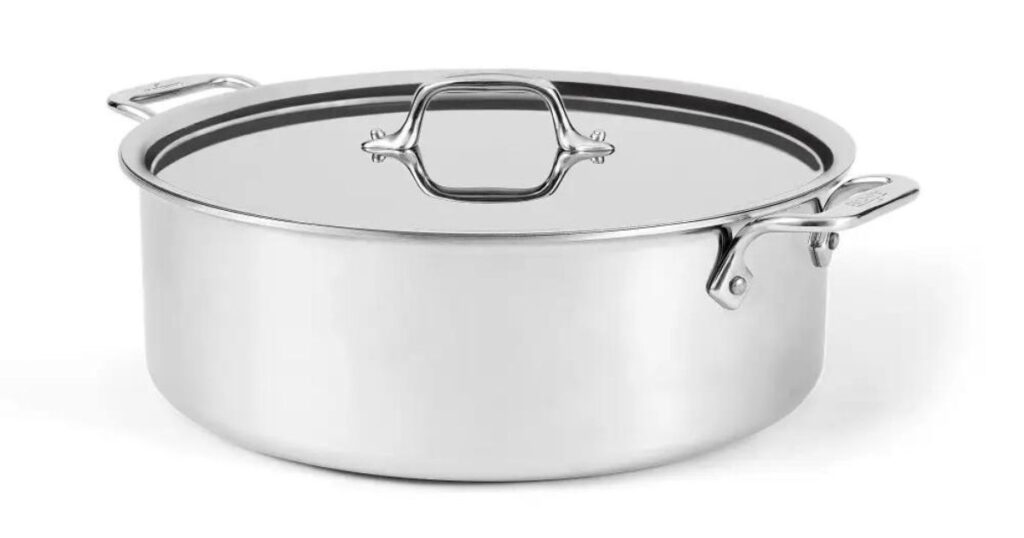
If you’ve come across the term “Rondeau pan” and wondered if it goes by any other name, you’re not alone. In culinary circles, the Rondeau pan is often referred to by alternative words that describe its unique characteristics and purpose.
One commonly used alternative name for the Rondeau pan is the “braising pan.” This name highlights the pan’s primary function and emphasizes its versatility in braising various ingredients. The wide, shallow design of the pan, with its straight sides and flat bottom, makes it perfect for the slow, gentle cooking method of braising.
Another term used interchangeably with Rondeau pan is the “brazier.” This name reflects the pan’s historical association with the traditional cooking vessel used for brazing, a technique similar to braising. The word “brazier” originates from the Old French term “brasier,” meaning “live coals” or “embers,” highlighting the pan’s connection to the open flame cooking methods of the past.
While the Rondeau pan, braising pan, and brazier are the most common names for this versatile cooking vessel, it’s essential to note that regional and cultural variations might have different terms to describe it. However, regardless of the name used, the pan’s design and purpose remain consistent: to provide a broad, shallow cooking surface for braising, searing, stewing, and more.
Rondeau Pan Vs. Other Pans
When selecting the right pan for your cooking needs, it’s essential to understand how the Rondeau pan compares to other pans available in the culinary world. Let’s explore the key differences and advantages of the Rondeau pan over other commonly used pans.
Rondeau Pan vs. Saute Pan
While both pans have a broad cooking surface, the Rondeau pan has higher sides than a sauté pan. This makes the Rondeau pan more suitable for cooking larger quantities of food or recipes that require liquid additions, such as braising or stewing. The higher sides of the Rondeau pan help contain the ingredients and prevent splatters during cooking.
Rondeau Pan vs. Skillet
A skillet, also known as a frying pan, typically has sloped sides and is designed for quick cooking techniques such as frying and sautéing. On the other hand, the Rondeau pan’s straight sides and wide cooking surface make it more versatile for tasks like browning, simmering, and braising. The Rondeau pan’s larger capacity and ability to distribute heat evenly make it ideal for slow-cooked dishes and recipes that require extended cooking times.
Rondeau Pan vs. Dutch Oven
While the Rondeau pan and Dutch oven are versatile cooking vessels, they differ in design and functionality. The Dutch oven has higher sides, a tight-fitting lid, and is usually made of cast iron or enameled cast iron. It excels at long, slow cooking methods and is ideal for pot roasts and soups. With its shallower sides, the Rondeau pan is better suited for tasks requiring more surface area, such as browning, searing, and braising. Its broader cooking surface allows for efficient evaporation and reduction of liquids.
Rondeau Pan vs. Stockpot
Stockpots are primarily used for making stocks, soups, and boiling large quantities of liquid. They have tall sides and a narrow base, allowing maximum liquid capacity. In contrast, the Rondeau pan has wider dimensions and is better suited for tasks that involve browning, searing, and simmering, in addition to braising. The Rondeau pan’s flatter base promotes even heat distribution and aids in achieving desirable browning and caramelization.
How to Use Rondeau Pans
Mastering a Rondeau pan can elevate your cooking skills and open culinary possibilities. Here are some essential tips on how to make the most out of your Rondeau pan:
Preheating: Preheat your Rondeau pan over medium heat for a few minutes before cooking. This allows the pan to distribute heat evenly and ensures consistent cooking throughout.
Browning and Searing: Add a small amount of oil or butter to the preheated pan for browning or searing recipes. Place the ingredients in a single layer, ensuring enough space to avoid overcrowding. Let them cook undisturbed until a golden-brown crust forms. Flip or turn the ingredients to brown the other side if needed.
Braising: To braise in a Rondeau pan, boil the meat or vegetables over medium-high heat. Once browned, reduce the heat and add a flavorful liquid such as broth, wine, or sauce to cover about halfway up the ingredients. Cover the pan with a lid or foil and let it simmer gently over low heat until the elements become tender and infused with the flavors of the braising liquid.
Simmering and Stewing: When steaming or stewing, use the wide cooking surface of the Rondeau pan to accommodate the ingredients and the liquid. Add your elements along with the desired seasonings and cooking liquid. Please bring it to a gentle simmer, then reduce the heat to maintain the simmer. Stir occasionally to ensure even cooking and flavor distribution.
Oven Transitions: The versatility of a Rondeau pan allows for seamless transitions from stovetop to oven. If your recipe requires finishing in the oven, ensure that your Rondeau pan is oven-safe. Transfer the pan, with its contents, to a preheated oven and continue cooking as directed in the recipe.
How to Choose the Right Rondeau Pan
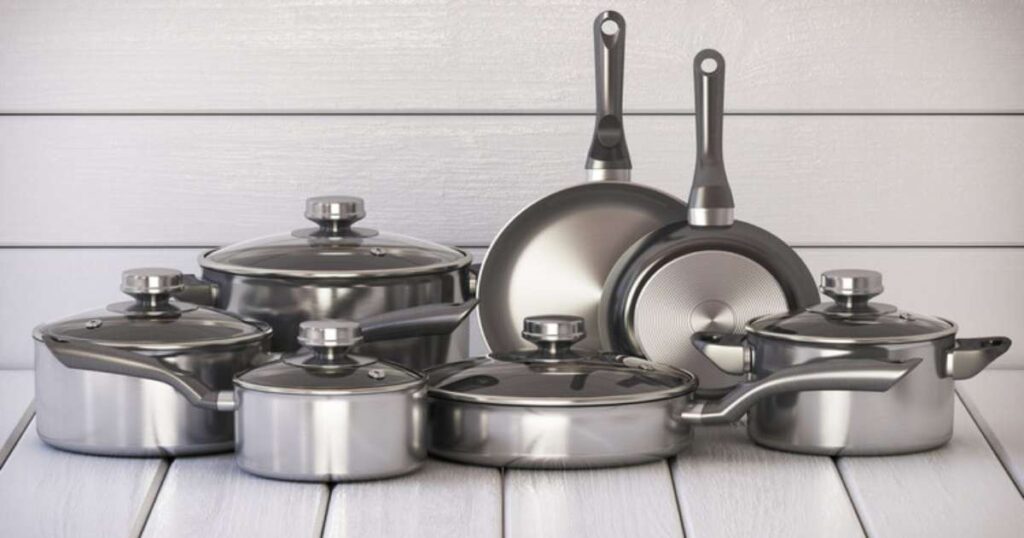
Selecting the right Rondeau pan ensures optimal cooking performance and culinary success. Here are some key factors to consider when choosing the perfect Rondeau pan for your kitchen:
Size and Capacity:
Rondeau pans come in various sizes, so you must consider your cooking needs and the food you typically prepare. Smaller pans are suitable for individual servings or smaller recipes, while larger pans can accommodate more substantial quantities. Assess your cooking habits and choose a size that suits your requirements.
Material:
Rondeau pans are available in different materials, each with its unique characteristics. Stainless steel pans offer durability and excellent heat conductivity and are easy to clean. Copper pans provide superior heat responsiveness and even heat distribution. Cast iron pans excel at heat retention and offer tremendous versatility. Consider the material that best suits your cooking preferences and needs.
Coating:
Some Rondeau pans come with non-stick coatings, which can be convenient for low-fat cooking and easy cleanup. However, remember that non-stick coatings may wear off over time and require careful maintenance. Decide whether a non-stick coating is a priority for your cooking style or if you prefer the natural seasoning and versatility of plain stainless steel or cast iron pan.
Handle Design:
The handle design is vital to the pan’s usability and comfort. Look for Rondeau pans with sturdy, ergonomic handles that provide a secure grip. Heat-resistant handles are valuable, ensuring you can handle the pan safely even when hot.
Budget:
Consider your budget when choosing a Rondeau pan. Prices can vary depending on the material, brand, and quality. It’s worth investing in a durable, high-quality pan that will serve you well for years. However, there are also budget-friendly options available that can still offer satisfactory performance.
Brand and Reviews:
Research reputable brands that are known for producing quality cookware. Read customer reviews and ratings to gain insights into the performance and durability of different Rondeau pans. Pay attention to feedback regarding even heat distribution, durability, and overall cooking experience.
By considering these factors, you can make an informed decision and choose the right Rondeau pan that aligns with your cooking preferences, budget, and culinary aspirations.
Caring for Your Rondeau Pan
Proper care and maintenance of your Rondeau pan are essential to prolong its lifespan and ensure optimal cooking performance. Here are some tips on how to care for and maintain your Rondeau pan:
Cleaning and Maintenance of Rondeau Pans:
- Cool Down Before Cleaning: Allow the Rondeau pan to cool down after cooking before cleaning it. Placing a hot pan under cold water can cause thermal shock and potentially damage the pan.
- Hand Wash: Wash your Rondeau pan using warm, soapy water and a soft sponge or cloth. Avoid using abrasive cleaners or scouring pads that can scratch the pan’s surface. The gentle hand-washing method helps preserve the integrity of the pan.
- Stubborn Food Residue: If food residue is persistent and difficult to remove, fill the pan with warm soapy water and let it soak for a while. This will loosen the residue, making it easier to clean. Avoid leaving the pan soaked for an extended period, as it may lead to discoloration or affect the pan’s finish.
- Avoid Harsh Cleaners: Avoid using harsh chemicals or abrasive cleaners on your Rondeau pan, as they can damage the pan’s surface. Stick to mild dish soap and non-abrasive cleaning tools for routine cleaning.
- Dry Thoroughly: Dry the Rondeau pan thoroughly to prevent any potential rusting. Towel-dry the pan or place it over low heat on the stove for a few minutes to evaporate any residual moisture.
How to Store Rondeau Pans:
- Stack with Care: If you need to stack your Rondeau pans for storage, place a protective layer, such as a soft cloth or paper towel, between each pan to prevent scratching or damage.
- Hanging Storage: Consider turning your Rondeau pan for storage if space permits. This helps prevent scratching and allows for easy access when needed. Use sturdy hooks or a pot rack designed for hanging cookware.
- Protect the Surface: To protect the pan’s surface from scratches, you can place a soft cloth or silicone protector inside the pan when not in use.
By following these care and maintenance guidelines, you can ensure that your Rondeau pan remains in excellent condition, ready to assist you in creating culinary masterpieces for years to come.
Cooking Tips for Rondeau Pans
Cooking with a Rondeau pan offers a unique culinary experience, and with a few helpful tips, you can maximize your cooking potential. Here are some cooking tips to enhance your Rondeau pan cooking:
Preheat for Even Heat Distribution: Preheat your Rondeau pan before adding ingredients. This allows the pan to heat evenly, ensuring consistent cooking throughout. Heating the pan before adding oil or components also helps prevent sticking.
Use the Right Cooking Utensils: When cooking with a Rondeau pan, opt for non-metal utensils such as wooden or silicone spatulas, tongs, or spoons. Metal utensils can scratch the pan’s surface, especially if it has a non-stick coating.
Optimal Heat Control: The wide cooking surface of a Rondeau pan allows for efficient heat distribution. For tasks like browning or searing, heat the pan over medium-high heat. Once the desired browning is achieved, reduce the heat to low or medium-low for simmering or braising. The lower heat setting prevents food from burning or sticking to the pan.
Proper Food Placement: When adding ingredients to the Rondeau pan, ensure they are placed in a single layer without overcrowding. Overcrowding can lead to uneven cooking and steaming instead of browning. If necessary, cook in batches to maintain optimal heat distribution and achieve desired results.
Utilize the Shallow Sides: The shallow Rondeau pan makes it ideal for reducing liquids and creating concentrated flavors. When simmering or reducing sauces, leave the pan uncovered to allow for evaporation and concentration of flavors.
Experiment with Different Recipes: The versatility of a Rondeau pan allows you to explore a wide range of recipes and cooking techniques. Try braising meats, simmering stews, sautéing vegetables, or even baking certain dishes in the oven. Don’t hesitate to experiment and adapt your favorite recipes to leverage the unique features of the
Rondeau pan.
Monitor Cooking Times: The broad cooking surface of the Rondeau pan may require slight adjustments to cooking times compared to smaller pans. Keep an eye on cooking times and make any necessary modifications based on the heat distribution and thickness of the ingredients.
Where to Buy Rondeau Pans
If you’re ready to add a Rondeau pan to your kitchen arsenal, there are several options for purchasing one. Here are two common avenues for buying Rondeau pans:
Physical Stores:
Kitchen Supply Stores: Visit local kitchen supply stores or specialty cookware shops. These stores often carry a variety of cookware options, including Rondeau pans. You can browse the selection in person, get a feel for the pan’s quality and size, and seek advice from knowledgeable staff.
Department Stores: Some larger department stores with a kitchenware section may also stock Rondeau pans. Check the cookware aisle or inquire with the store’s staff to see if they carry the specific type of pan you’re looking for.
Online Stores:
Dedicated Cookware Websites: Explore online cookware retailers that specialize in kitchen supplies. These websites offer various cookware options, including Rondeau pans, with detailed product descriptions, customer reviews, and convenient shipping options. Examples of such websites include Cookware.com, Sur La Table, and Williams Sonoma.
Online Marketplaces: Online marketplaces like Amazon, eBay, or Walmart.com often have a vast selection of Rondeau pans. You can compare prices, read customer reviews, and choose from different brands and materials. Check the seller’s ratings and reviews to ensure a reliable purchasing experience.
When buying online, it’s essential to review product specifications, customer feedback, and return policies before purchasing. Additionally, consider factors such as shipping costs and delivery times to make an informed decision.
Frequently Asked Questions (FAQs)
What is the Difference Between a Rondeau Pan and a Dutch Oven?
While both Rondeau pans and Dutch ovens are versatile cookware, they have some key differences. Rondeau pans have a wide, shallow shape with straight sides, making them ideal for browning, sautéing, and reducing sauces. Dutch ovens, on the other hand, have higher sides and tight-fitting lids, making them suitable for slow cooking, braising, and roasting more significant cuts of meat.
What is the Best Material for a Rondeau Pan?
The best material for a Rondeau pan depends on personal preference and cooking needs. Stainless steel is durable and offers excellent heat distribution. Copper provides superior heat conductivity and precise temperature control. Cast iron offers exceptional heat retention and even cooking. Consider your cooking style and maintenance preferences when choosing the material for your Rondeau pan.
Can a Rondeau Pan be Used in the Oven?
Yes, a Rondeau pan can typically be used in the oven. However, it’s essential to check the manufacturer’s guidelines for specific temperature limitations and any recommendations for handles or lids that may not be oven-safe. Most Rondeau pans made from stainless steel or cast iron are oven-safe and can withstand high temperatures.
What is the Ideal Size for a Rondeau Pan?
The ideal size of a Rondeau pan depends on your cooking needs and the food you typically prepare. Standard sizes range from 4 to 8 quarts, with larger pans accommodating larger quantities. Consider the number of servings you usually cook and the space available on your stovetop when selecting the size of your Rondeau pan.
Is a Rondeau a sauté pan?
While a Rondeau pan can be used for sautéing, it differs from a traditional sauté pan. Rondeau pans have a wider cooking surface and shallower sides than sauté pans. This allows for browning and sautéing more ingredients at once, making them versatile for various cooking techniques.
What is a Rondeau in cooking terms?
In cooking terms, a Rondeau refers to a wide, shallow pan with straight sides and two loop handles. It is a versatile cookware for various cooking techniques, including browning, sautéing, braising, stewing, and simmering. Rondeau pans are often found in professional kitchens and are valued for their even heat distribution and cooking performance.
Conclusion
A Rondeau pan is a versatile and valuable addition to any kitchen. Its wide, shallow shape, even heat distribution, and durable construction make it ideal for various cooking techniques. Whether browning, sautéing, braising, or simmering, a Rondeau pan can help you achieve delicious and flavorful results.
You can make the most of your Rondeau pan by understanding its uses, selecting the right size and material, and following proper care and cooking techniques. So, explore the culinary possibilities that await this exceptional piece of cookware. Happy cooking!

